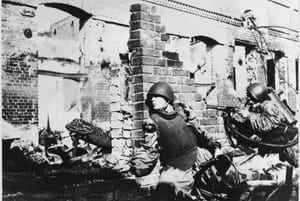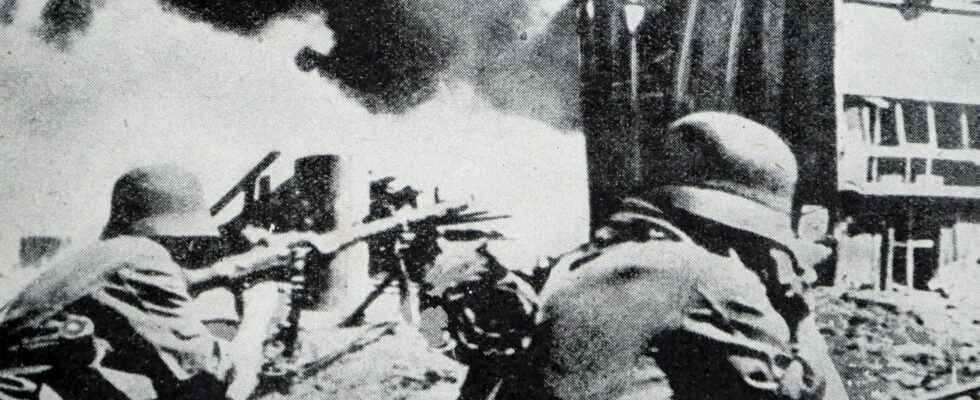80 YEARS OF STALINGRAD – On the occasion of the 80th anniversary of the Battle of Stalingrad, Russia commemorates this bloody victory over the Germans of the Third Reich. This event also marks a turning point in the war on the Eastern Front.
The Battle of Stalingrad is one of the deadliest in the Second World War. For more than six months, from July 1942 to February 1943, German troops of the Third Reich clashed with Stalin’s Russian troops in the city of Stalingrad, sometimes in the midst of civilians. If Hitler hoped to win this battle before winter, it quickly got bogged down with street fights carried out in certain areas of the city. With winter, German exhaustion is felt, while the Soviets strengthen their positions. The logistics and supply issues particularly hurt the fighters of the Third Reich. The latter find themselves partially surrounded from November. Hitler urges them to hold on and promotes Friedrich Paulus to the rank of Generalfeldmarschall. His soldiers must fight or die, but don’t surrender. However, the officer has no other choice: he surrenders with all of his men. The Battle of Stalingrad officially ended on February 2, 1943. It was the start of the weakening of the German army on the Eastern Front. From this date, the Soviets will begin to reconquer the territories lost since Operation Barbarossa (June 1941), when the Germans attacked their Eastern ally.
During the German-Soviet War (1941-1945) which took place during World War II on the Eastern Front, the Battle of Stalingrad (Volgograd) was a series of battles between the forces of the Soviet Union and those of the Third Reich. On the orders ofadolf hitler, Friedrich Paulus assaulted the city of Stalingrad in western Russia. This violence lasted more than six months, between July 1942 and February 1943. Stalingrad was one of the greatest defeats of the German army. It marked history by the scale of the means deployed and the material and human losses (nearly 2 million dead).
When and how did the Battle of Stalingrad take place?
The Battle of Stalingrad is actually a succession of battles between the Allied forces against Nazi Germany and the Soviet Union. The battle began on July 17, 1942 and ended on February 2, 1943 by the defeat of the Germans and their allies. In July 1942, Third Reich forces were ordered to attack the city of Stalingrad in the USSR. The German air force (Luftwaffe) plays an important role, destroying a good part of the city by bombardments on August 23rd. The damage is considerable, as well as the civilian casualties. The Germans then penetrate Stalingrad and control the majority of the city in November. But the Soviets became masters of ambushes, terrorizing the Germans in urban guerrilla warfare. Thanks to reinforcements, a Russian counter-offensive was launched on November 19, 1942 and drove out the forces of the Third Reich which were not equipped to face the Soviet winter.
Why did the Battle of Stalingrad take place?
At the start of World War II, the Soviet Union invaded Poland on the side of the Germans. The two nations have signed the German-Soviet Pact which unites them. However, on June 22, 1941, the Führer launched theOperation Barbarossa and his army enters Russian territory. This is the beginning of a new conflict for Germany, on the Eastern front: the German-Soviet war. In November 1941, Hitler began the siege of Leningrad and isolated the city for three years. At the same time, his troops attacked Moscow, but the Soviets resisted and the Germans were repelled in January 1942. Adolf Hitler therefore embarked on an offensive against Stalingrad in July 1942.
This Russian city is a symbol of the USSR of Stalin. It is also an industrial city where many military equipment were manufactured during the Second World War. Finally, it is a door to the oil fields of the Caucasus. The Führer hopes for a victory to feed his propaganda while another part of his forces is stalling in the Caucasus. Thus, Stalingrad which was only a secondary objective quickly becomes a priority for Adolf Hitler. Opposite, Joseph Stalin also grasped the importance of this city and put up fierce resistance to the German troops.
How does this battle illustrate the war of annihilation?

Joseph Stalin and Adolf Hitler sacrificed many men and a lot of means in these fights which lasted six months. If the German army managed to enter Stalingrad, it was quickly surrounded and besieged by its adversaries. The many bombardments destroy nearly 80% of buildings and particularly affect civilians. The Battle of Stalingrad turns into a particularly violent urban war where the preservation of the city and the lives of civilians are not taken into account. Because of these issues and the means deployed, the Battle of Stalingrad is a war of annihilation where there can only be one winner.
What is the death toll from the Battle of Stalingrad?
The number of dead varies between historians, but it is estimated at nearly two million with a greater loss on the Soviet side (over a million dead) where many civilians were killed in the fighting (about 300,000 dead). On the side of the Axis forces, which brought together Croats, Hungarians, Romanians, Italians, but also Germans, losses are estimated in the range of 700,000 to 800,000 dead. The Soviets also took around 91,000 German prisoners who would be held in dire conditions: nearly half of them had already died in the spring of 1943.
Who won the Battle of Stalingrad?
Faced with the cold, supply problems, lack of ammunition and the Soviet offensive which surrounded the Germans, Marshal Friedrich Paulus of the Third Reich was captured by the Russians on January 31, 1943. He is obliged to sign the capitulation of the German troops. In July 1943, Hitler launches his last forces in the battle of Kursk which will also be a failure. The Battle of Stalingrad has since been considered a turning point in World War II on the Eastern Front. The defeats in Russia will convince the leaders of the Axis countries to disengage from their alliance with Nazi Germany. Morally, it is a shock for the Germans. Conversely, Russian morale is at its highest. Stalin’s army takes the direction of Germany and begins by liberating Ukraine and Belarus in 1944.
